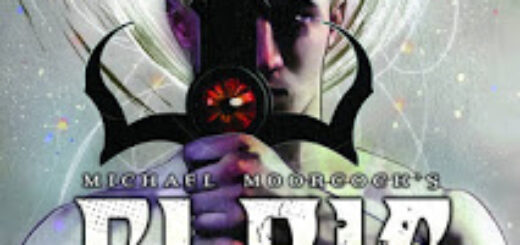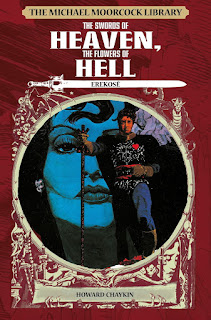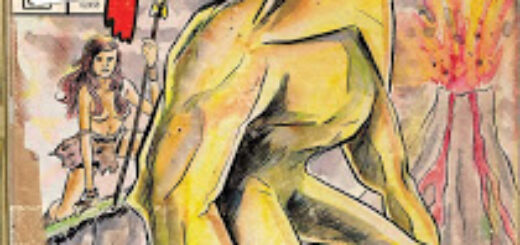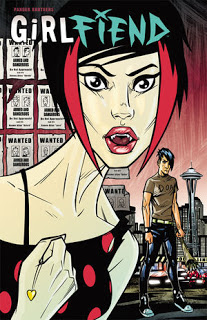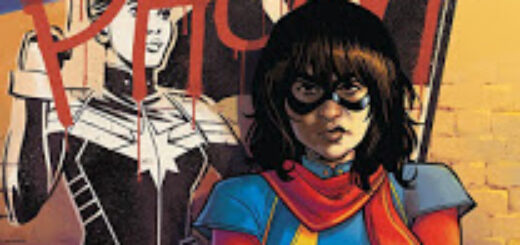Are You Listening? by Tillie Walden
This book makes we want to get Hegelian, but I have to immediately insist that it’s not the book’s fault — I’ll overanalyze anything given half a chance, and this just happened to wander into my sights.
So, with that caveat: Are You Listening? feels like a synthesis. Tillie Walden started her comics career with shorter books and stories — which I still haven’t seen, and which may, for those who know them well, utterly shatter this idea I have — and then moved on into big books with first Spinning , then On a Sunbeam , and then Listening.
Spinning is the thesis: a memoir about Walden’s own life, growing up mostly in Texas, a girl realizing she’s queer, beginning to think about what she wants and doesn’t want in her life, focused through the lens of her decade-plus as a competitive skater.
On a Sunbeam is the antithesis: a SFnal story, set in an entirely imagined universe (one with no male gender at all, as far as the story showed, though there was, oddly, one “non-binary” person), with strange and quirky rules, and a story of first love thwarted by the universe and (more prosaically) by the fact that first loves tend to end anyway.
Last year Walden came back with Are You Listening?, a graphic novel set in real-world Texas but featuring fictional characters, about two young queer women who are not going to have any quote-unquote “relationship” with each other, a road trip on a smaller scale than Sunbeam but featuring eruptions of fantasy unlike Spinning. So: synthesis.
Walden is already an interesting and subtle graphic novelist, even this early in her career, so I don’t want to try to pigeonhole her, but I think this could be a signpost. What I hope to see from her over the next years or decades is more books like Listening: based in a realistic world but with fantasy elements, about young women (probably getting older as Walden does herself) navigating things other than just first love and coming out, who are more and more at home in their own lives as time goes on.
(We’ll see if that’s the case: Walden is clearly smart and talented enough to go an entirely different way, somewhere along the line.)
So Listening is the story of these two women and this one trip. Bea is in her late teens, and is clearly running away from her small-town home, for reasons we won’t learn for a while but are clearly powerful. Lou is almost a decade older, a small-town mechanic making a trip to visit family — but it also quickly becomes clear that she’s also running away, in the quieter way of a more settled, slightly older person who has gotten deeply unhappy with some of the major things in her life.
Along the way, they find a cat, and try to take it back to its home. Lou teaches Bea how to drive. They open up to each other, at least somewhat. And they are pursued by the mysterious, unexplained Office of Road Inquiry as they drive further and further into West Texas.
As far as I can see, that Office has nothing to do with Bea’s secrets or Lou’s restlessness. They do have an interest in the cat, though: maybe it’s the cat that ties everything together. Listening is not a story in which everything is tied up in a bow at the end — it’s the story of a few days in Bea’s and Lou’s lives. Important days, transformational days. Days where they change each other and move on in their own directions with more purpose, but just a few days.
Like Walden’s previous books, Listening is about people and their relationships. There are other things going on in her books, but the people are central and their emotions are the drivers of her books. Listening feels like it has a tighter focus than Spinning, which covered whole years and all of young Walden’s concerns, or Sunbeam, with its larger, complex cast and richly imagined universe. Walden here is bouncing two characters off each other — both of them feel like getting out, of different things for different reasons, and then throwing other complications at them to see how they react and what kind of people they are when they come out the other end.
It’s a surprisingly quiet book for a road-trip story about two women pursued by potentially-supernatural and definitely threatening entities, but surprising is par for the course for Walden so far. And surprising is a wonderful and amazing thing for any creator — even more so for someone who can put out lovely, deep books like these this often.
![]()
![]()
Reposted from The Antick Musings of G.B.H. Hornswoggler, Gent.



























